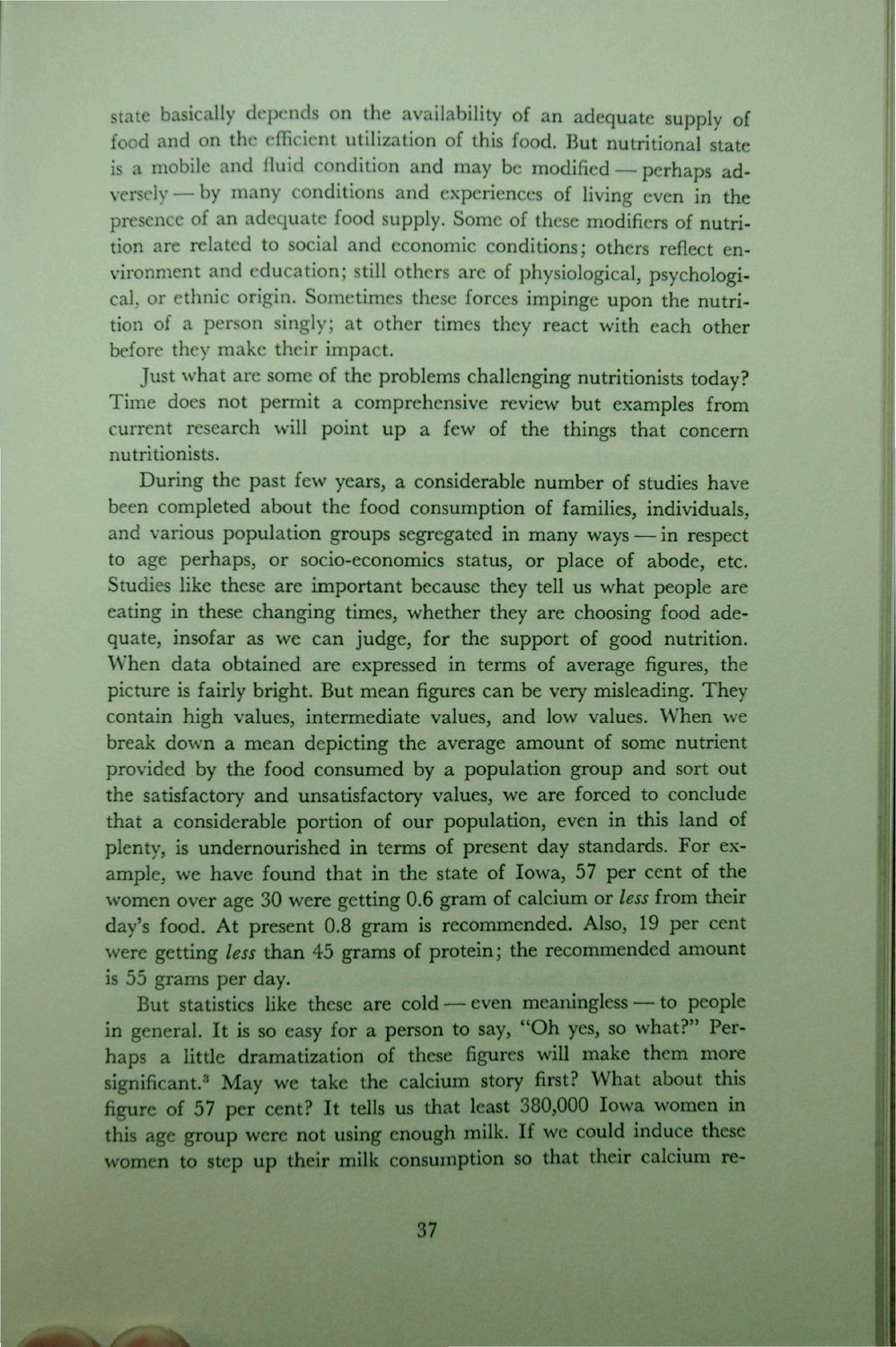| |
| |
Caption: Dedication - Home Economics - Challenge of Home Economics
This is a reduced-resolution page image for fast online browsing.

EXTRACTED TEXT FROM PAGE:
state basically depends on the availability of an adequate supply of food and on the efficient utilization of this food. But nutritional state is a mobile and fluid condition and may be modified — perhaps adversely— by many conditions and experiences of living even in the presence of an adequate food supply. Some of these modifiers of nutrition are related to social and economic conditions; others reflect environment and education; still others are of physiological, psychological, or ethnic origin. Sometimes these forces impinge upon the nutrition of a person singly; at other times they react with each other before they make their impact. Just what are some of the problems challenging nutritionists today? Time does not permit a comprehensive review but examples from current research will point up a few of the things that concern nutritionists. During the past few years, a considerable number of studies have been completed about the food consumption of families, individuals, and various population groups segregated in many ways — in respect to age perhaps, or socio-economics status, or place of abode, etc. Studies like these are important because they tell us what people are eating in these changing times, whether they are choosing food adequate, insofar as we can judge, for the support of good nutrition. When data obtained are expressed in terms of average figures, the picture is fairly bright. But mean figures can be very misleading. They contain high values, intermediate values, and low values. When we break down a mean depicting the average amount of some nutrient provided by the food consumed by a population group and sort out the satisfactory and unsatisfactory values, we are forced to conclude that a considerable portion of our population, even in this land of plenty, is undernourished in terms of present day standards. For example, we have found that in the state of Iowa, 57 per cent of the women over age 30 were getting 0.6 gram of calcium or less from their day's food. At present 0.8 gram is recommended. Also, 19 per cent were getting less than 45 grams of protein; the recommended amount is 55 grams per day. But statistics like these are cold — even meaningless — to people in general. It is so easy for a person to say, "Oh yes, so what?" Perhaps a little dramatization of these figures will make them more significant.8 May we take the calcium story first? What about this figure of 57 per cent? It tells us that least 380,000 Iowa women in this age group were not using enough milk. If we could induce these women to step up their milk consumption so that their calcium re87
| |